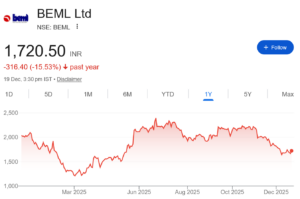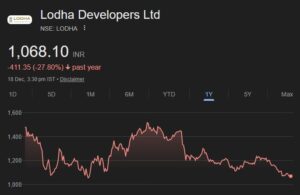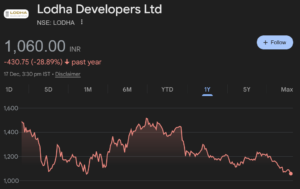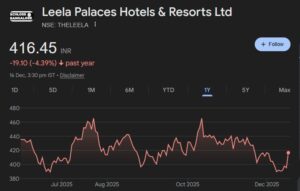
Fairwealth Institutional Research has recommended basket of public sector banks with high dividend yield as on 04 June, 2012, after which banks have seen a sharp rally. This basket of banks has given an average return of 15% (including dividend, 11% excluding dividend) in one month.
Below is the performance sheet of “PSU Banks with High Dividend Yield – Worth Investing” –
| Bank | LTP as on 05July, 2012 (Rs) | Prices as onreport released(Rs) | Dividend perShare for FY12(Rs) | Ex-DividendDate | Return %(IncludingDividend) | Return %(ExcludingDividend) |
| Corporation Bank | 431 | 409 | 21 | 15-Jun-12 | 10% | 5% |
| Bank of Baroda | 733 | 679 | 17 | 14-Jun-12 | 10% | 8% |
| Canara Bank | 431 | 397 | 11 | 14-Jun-12 | 11% | 9% |
| Uco Bank | 83 | 70 | 3 | 15-Jun-12 | 22% | 18% |
| Union Bank | 213 | 192 | 8 | 21-Jun-12 | 15% | 11% |
| Dena Bank | 102 | 93 | 3 | 21-Jun-12 | 13% | 9% |
| Syndicate Bank | 110 | 92 | 4 | 11-Jul-12 | 24% | 20% |
| Andhra Bank | 119 | 108 | 6 | 27-Jun-12 | 16% | 11% |
| Indian Overseas Bank | 87 | 82 | 5 | 21-Jun-12 | 12% | 6% |
| Vijaya Bank | 61 | 55 | 3 | 22-Jun-12 | 14% | 10% |
| Punjab National Bank | 846 | 740 | 22 | 14-Jun-12 | 17% | 14% |
| Average Return | 15% | 11% |

Fairwealth Institutional Research points out that the Banking Sector has seen consistent pressure due to series of monetary measures adopted by RBI to curtail sticky inflation since March 2010, in turn transmitted by banking system. This along with global uncertainty resulted in high interest rates environment, slowing credit demand, and weak business sentiments in last one year. The pressure deepened further in last six months on the back of worsening domestic macro-economic factors. Concerns over several key parameters like credit growth, asset quality, profitability etc led many banking stocks to touch their 52-week low.
Bank Nifty has given negative returns in last one and three months i.e. 4.49% and 8.02% respectively.
PSU Banks underperformer as compared to Private Banks: Banks have declared their quarterly results for fourth quarter of FY12 and complete financial year 2011-12. Considering the overall pressure in banking space, performance posted by private banks is much better than PSU banks in terms of credit growth, asset quality, margins, profitability etc. Most of the PSU banks have experienced pressure on asset quality, drop in NIMs, slower growth in deposits and advances, deteriorated returns on equity and assets, etc on the back of downturn witnessed by overall economy. It was the only SBI announcing better than expected results with significant improvement in financial parameters after horrible performance in last few quarters. The prices of PSU Banks are eroded by a good percentage in last one year and many of them are trading at attractive valuations.
After a steep correction, most of the PSU Banks are trading at below their book value and adjusted book value. We are still not convinced that upcoming quarters will throw positive surprises in terms of earnings and asset quality. Now, the question arises what should be the strategy for investors for these PSU Banks?
High Dividend Yield- A Silver Lining: PSU Banks have announced dividend also along with their FY12 results varying in the range of 20% to 350%. Investment at current prices may deliver very attractive dividend yield to investors for the current year as well for the next year as we believe majority of the negative factors are already priced in at current levels and situation is going to be improved by FY13. Hence, Investment at current levels in PSU banks can reward investors in three ways- (1)
Dividend Yield of FY12 (2) Dividend Yield of FY13 (3) High Probability of Price Appreciation from hereon and even if we see further downside in PSU stocks, the capital invested will be protected by the dividend amount received. Another interesting part is that dividends are tax free and do not form part of total income for the purpose of tax. Hence, we have found out few PSU Banks with good dividend track record and recommend our clients to consider investments in these stocks as a strategy to insulate their portfolio from capital erosion upto some extent.
PSU Banks at Attractive Valuations:
We feel that at current prices, concerns over asset quality, margins, business growth of PSU Banks are already priced in. Considering their price to earnings, book value and NPL adjusted book value, selected PSU stocks are likely to generate handsome return in long term.
| PSU Banks Trading at Attractive Valuations | |||||||
| Banks | CMP * | Book Value /Share * | Adj BV/Share | Price/ BookValue | Price/Adj Book Value | ||
| Rs | Rs | Rs | x | x |
|||
| Allahabad Bank | 125.5 | 192.9 | 171.1 | 0.65 | 0.73 | ||
| Andhra Bank | 107.7 | 133.7 | 120.2 | 0.81 | 0.90 | ||
| Bank of Baroda | 679.1 | 637.8 | 600.4 | 1.06 | 1.13 | ||
| Bank of India | 333.0 | 326.5 | 262.9 | 1.02 | 1.27 | ||
| Bank of Maharashtra | 49.5 | 63.8 | 55.8 | 0.78 | 0.89 | ||
| Canara Bank | 396.7 | 465.6 | 389.1 | 0.85 | 1.02 | ||
| Central Bank | 74.7 | 147.2 | 85.3 | 0.51 | 0.88 | ||
| Corporation Bank | 409.0 | 558.7 | 500.0 | 0.73 | 0.82 | ||
| Dena Bank | 93.0 | 122.6 | 106.3 | 0.76 | 0.88 | ||
| I O B | 81.5 | 135.3 | 111.4 | 0.60 | 0.73 | ||
| IDBI Bank | 85.7 | 137.2 | 114.5 | 0.62 | 0.75 | ||
| Indian Bank | 159.8 | 214.9 | 187.1 | 0.74 | 0.85 | ||
| Oriental Bank | 219.7 | 379.9 | 295.7 | 0.58 | 0.74 | ||
| Pun. & Sind Bank | 63.8 | 141.7 | 118.4 | 0.45 | 0.54 | ||
| Punjab National Bank | 739.8 | 777.4 | 646.1 | 0.95 | 1.14 | ||
| S B T | 478.0 | 773.2 | 602.5 | 0.62 | 0.79 | ||
| St Bk of Bikaner | 352.0 | 595.0 | 459.9 | 0.59 | 0.77 | ||
| St Bk of India | 2045.0 | 1251.1 | 1015.3 | 1.63 | 2.01 | ||
| St Bk of Mysore | 447.2 | 729.2 | 565.0 | 0.61 | 0.79 | ||
| Syndicate Bank | 91.7 | 133.5 | 113.8 | 0.69 | 0.81 | ||
| UCO Bank | 70.5 | 94.7 | 60.7 | 0.74 | 1.16 | ||
| Union Bank (I) | 192.4 | 198.0 | 152.3 | 0.97 | 1.26 | ||
| United Bank (I) | 59.0 | 114.7 | 84.9 | 0.51 | 0.70 | ||
| Vijaya Bank | 55.3 | 76.2 | 56.0 | 0.73 | 0.99 | ||
| * Prices as on 04 June, 2012. | ** Before adjusting revaluation reserves | ||||||
PSU Bank Stocks With High Dividend





